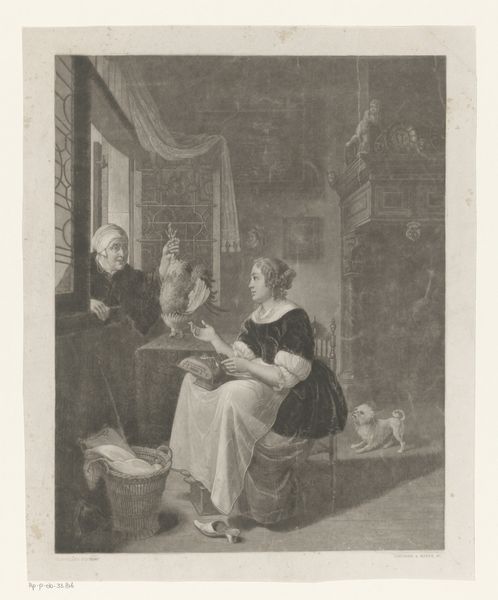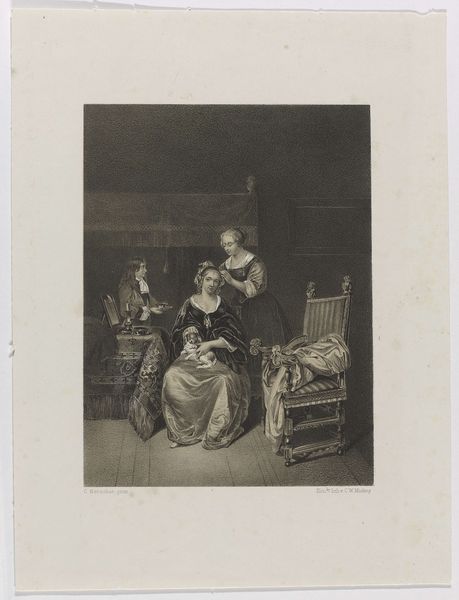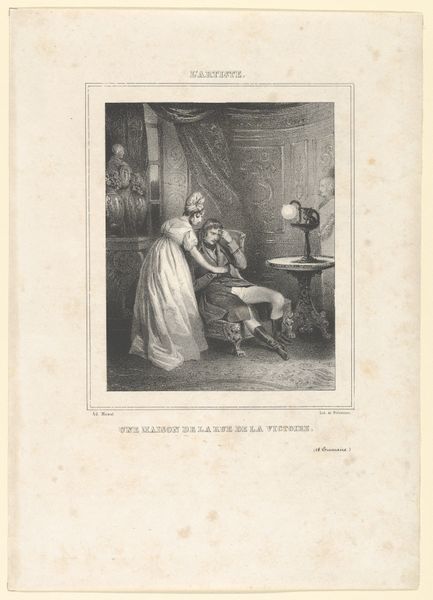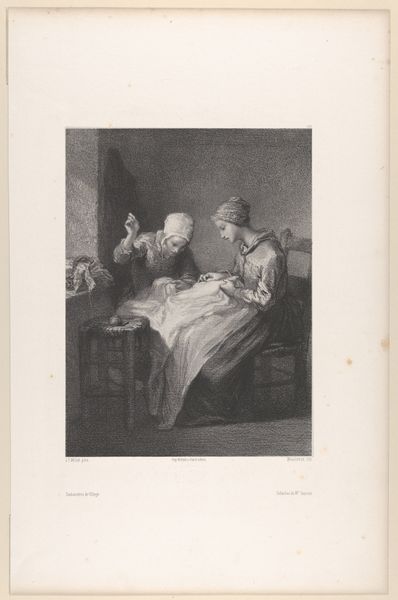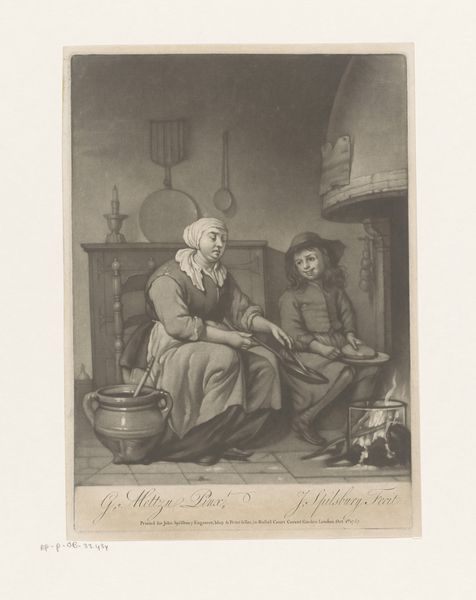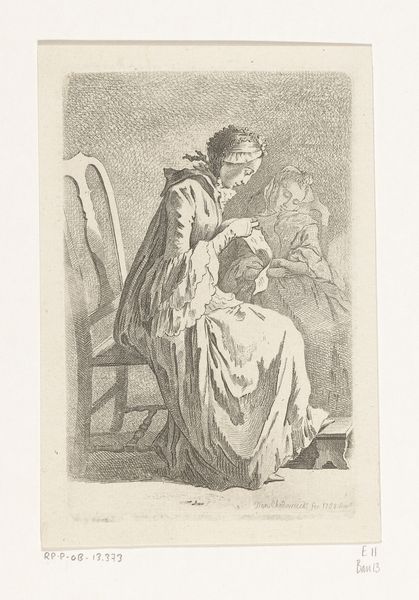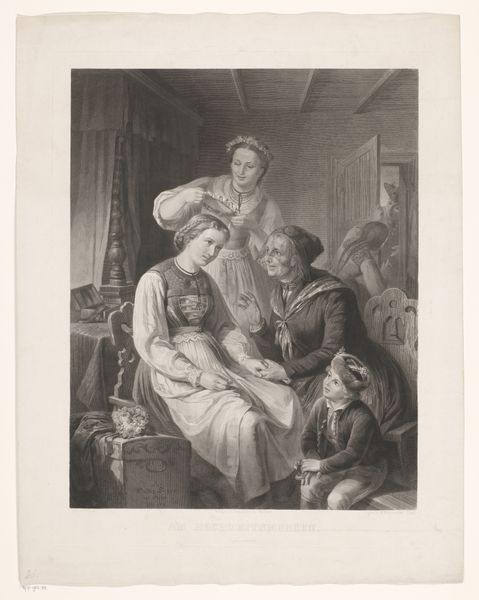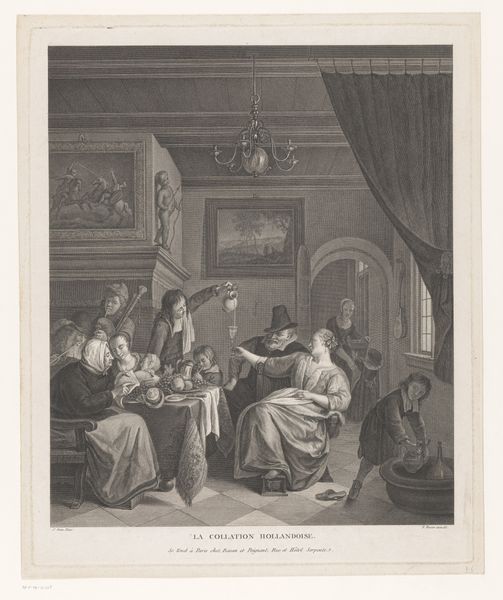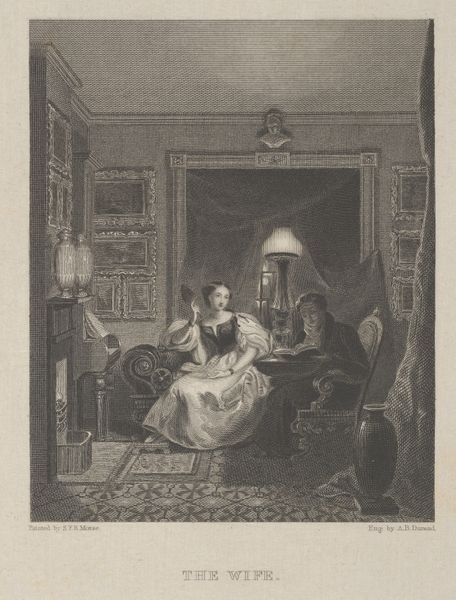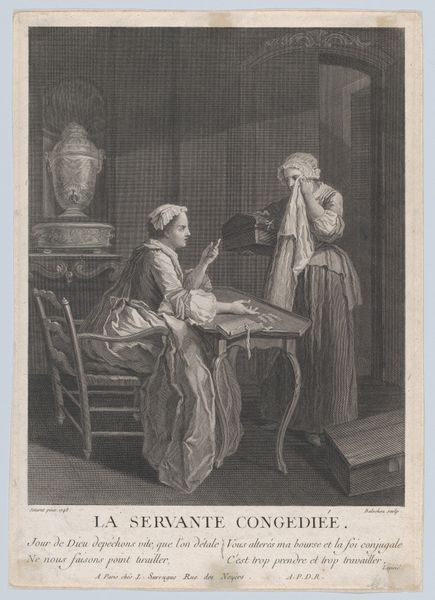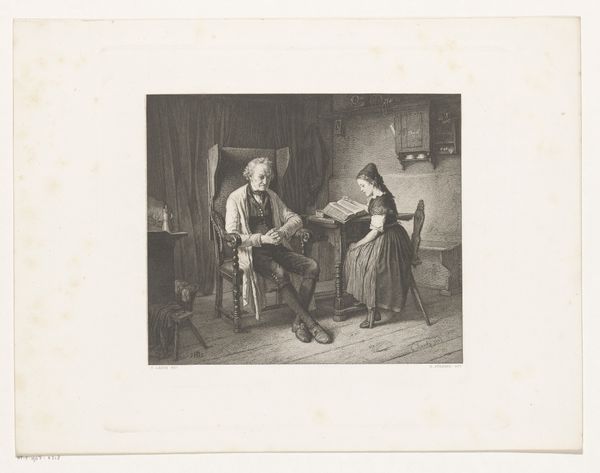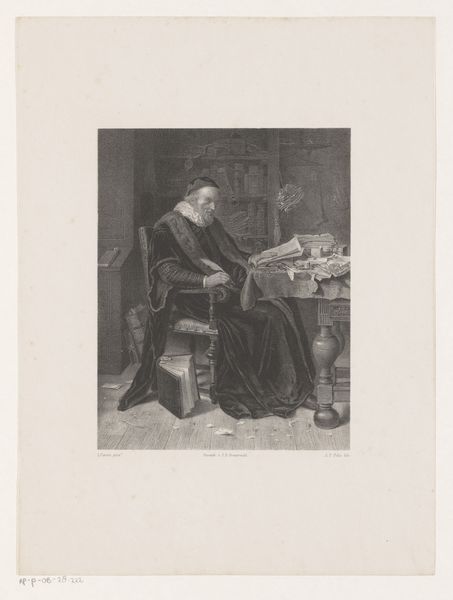
print, etching, engraving
#
portrait
#
dutch-golden-age
# print
#
etching
#
dog
#
genre-painting
#
engraving
Dimensions: height 372 mm, width 264 mm
Copyright: Rijks Museum: Open Domain
Curator: This print, titled "Kantkloster in een interieur," dates to between 1733 and 1797 and is credited to Pierre François Basan. The medium includes etching and engraving. The scene depicts a domestic interior with two women, one holding what looks like a dead fowl out the window. What is your first impression of the image? Editor: Stark, almost unsettlingly intimate. The grey tones contribute to a rather somber mood, contrasting with the presumed ordinary scene of women occupied in household tasks. It’s this dissonance between quiet domesticity and unsettling detail that grabs my attention. Curator: Indeed, the somber quality seems to stem from the cultural weight attached to these activities. Lace-making, a recurring theme, symbolizes a complex tension between feminine labor and artistic creation. But note the women themselves: observe their composure, their placement within the space. Do they evoke a feeling of continuity to you? Editor: Absolutely. Lace-making, like many so-called women’s crafts, becomes a conduit for intergenerational knowledge, preserving not only skills, but stories and social structures. Here, Basan touches upon the economic reality that underlies women's lives and challenges traditional power dynamics. How do we grapple with that in our contemporary lives? Curator: That raises some intriguing possibilities. There are so many repeating elements – patterns in the windowpanes, folds of fabric, architectural lines – as though a visual memory is etched into the image itself. Does the presence of a pet also amplify a theme about familial dynamics in your view? Editor: The dog absolutely personalizes the scene, and I read it as the material embodiment of class. Small, pampered, yet also relegated to the periphery, subtly mirroring the status of the lace maker herself: precious yet confined by circumstances, class, and perhaps societal expectations of the day. Curator: A striking consideration. For me, observing the play of light, shadow, and repeating patterns creates a sense of history not lost, a link between the women of that time and, in many ways, us today. Editor: Right, it forces us to acknowledge the work that goes into maintaining our worlds, even when so much effort becomes nearly invisible with time. Let us see this awareness then shape a more compassionate approach.
Comments
No comments
Be the first to comment and join the conversation on the ultimate creative platform.
